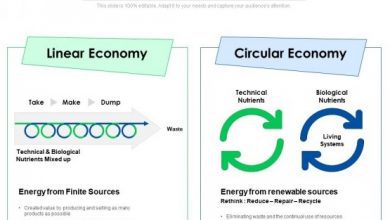Types of performance appraisal definition and importance
What is performance appraisal?
Performance evaluations are responsible for creating the main indicators of employee productivity and, therefore, it is necessary to understand which best fits your company and each sector. In this article we will define you the types of performance appraisal.
Performance appraisal is a systematic analysis of the performance of an individual or a group of employees. For this measurement, the activities developed, the results obtained, growth potential, among other factors, are taken into account.
Its application has numerous advantages, such as:
- recognition of productivity and engagement;
- clarity about the team’s aspirations;
- effectiveness of training actions;
- identification of negative behaviors.
Due to its importance, this evaluation has a strategic role in the company’s growth plan, since it is a people management tool that facilitates the understanding of how much each one contributes to the results.
What are the types of performance appraisal?
There are different methods and models of performance evaluations . The choice of the most suitable must take into account factors such as: profile of the company and of the evaluated employees, characteristics of the position, personal policy and interaction between the evaluator and the evaluated person.
1. Self-assessment
Among the main types of performance evaluation, self-evaluation makes the employee a protagonist in the analysis of his work.
It is carried out in two stages, in which the employee responds to a questionnaire regarding his performance, assessing his strengths and weaknesses. Then he and his superior talk about their responses and strategies to improve their performance.
2. Assessment by immediate superior
The analysis is done by the managerー who has more contact with the employee ー together with the HR department of the company.
3. Team assessment
Looking at the employee is important to understand the peculiarities that define individual potentials. However, it is also essential to evaluate the team itself , to make improvements in the workflow and enhance the achievement of goals.
4. Competency assessment
To carry out this type of assessment , it is first necessary to define the main competencies expected of the employee , considering their positions and functions.
From there, it is evaluated which skills are being well used and which should be improved by each one.
5. Evaluation by objectives
In this model, the leader and the team together create objectives and goals that must be achieved in a given period. After this time, the team itself makes an overall assessment of each of the members, considering the results achieved.
6. Evaluation by individual goals and results
It follows the same logic as the previous model, however the manager must make an individual assessment of each employee.
7. Critical incident assessment
It is based on recording situations in which the employee performed very well or very poorly. To be effective, it requires a good rapprochement between the manager responsible for assessments and employees. However, it is important that the manager is aware of what happens in the day to day of the company.
8. Forced distribution assessment
The assessment is divided into performance categories, such as:
- very satisfactory;
- satisfactory;
- median;
- unsatisfactory;
- very unsatisfactory.
Then, the manager groups the employees considering a limit amount in each one of them.
9. Cost-linked valuation
Of the types of performance appraisal this is the most ideal from a financial point of view. Each employee is analyzed according to their cost/benefit . That is, a comparison is made between what was produced by him and how much the company pays to maintain it.
10. 180 degree evaluation
Also known as joint assessment, manager and employee assess each other simultaneously and talk about feedback , with HR mediation.
11. 360 degree evaluation
It is one of the most used types of performance appraisal today and the most complete . In this model, all professionals who have contact with the employee, such as co-workers, suppliers and customers, participate in the evaluation. In addition, the employee himself performs a self-assessment in the process.
12. Assessment by graphic scale
Easy to do and simple to apply, this method is performed in the form of a form, in columns. On the one hand, the variables to be analyzed (creativity, teamwork, punctuality, etc.). On the other, a scale of values, which can be grades from “1 to 5” or from “poor to great”.
13. Leader assessment
And who said that performance evaluation is only applied to employees? In this type of evaluation, leaders are evaluated by their team. After all, they lead the team and when their performance is not good, this is reflected in the results.
Discover the importance of performance appraisal
As you have seen, each type of assessment has its particularities , being recommended for a specific organization profile or specific situation. The most appropriate choice must take into account your objectives and also the results to be obtained .
But regardless of which of the types of performance evaluation your company will adopt, it is important that this strategy is executed seriously and correctly . The results of these analyzes are fundamental for making more assertive decisions in relation to employees.
With them, the company can identify who has the most potential, being able to consider a possible promotion, for example. It is also possible to detect the areas that most need help and the existing knowledge gaps, identify the need to invest in specific training and qualifications, as well as other factors that influence the company’s results.
By understanding the need and knowing the types of performance evaluation, an HR team is ready to measure the professional behavior of its employees and have a solid basis for planning future actions that are, in fact, assertive.




